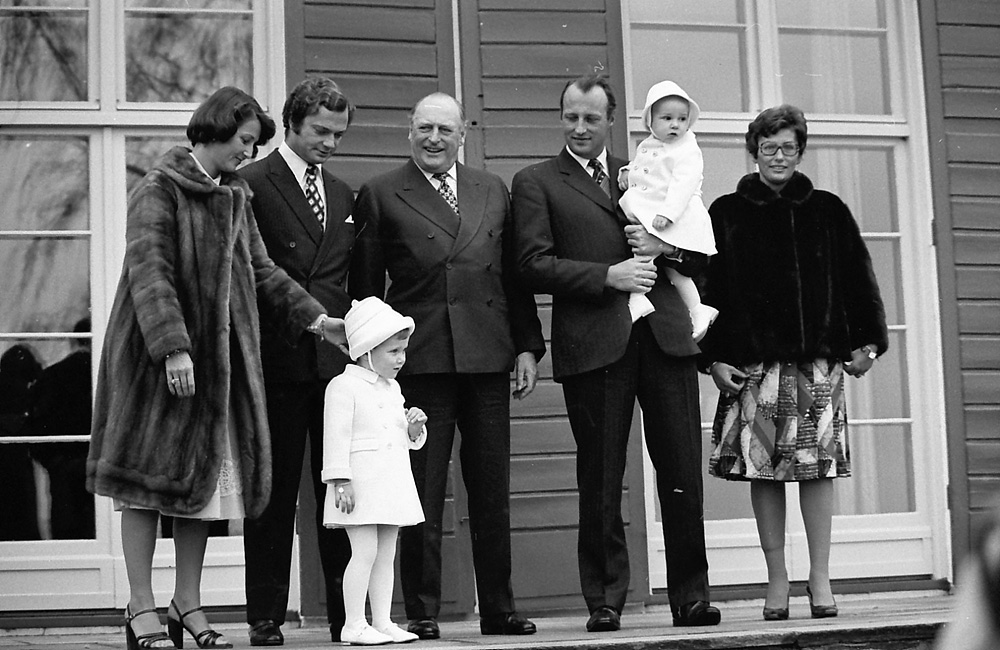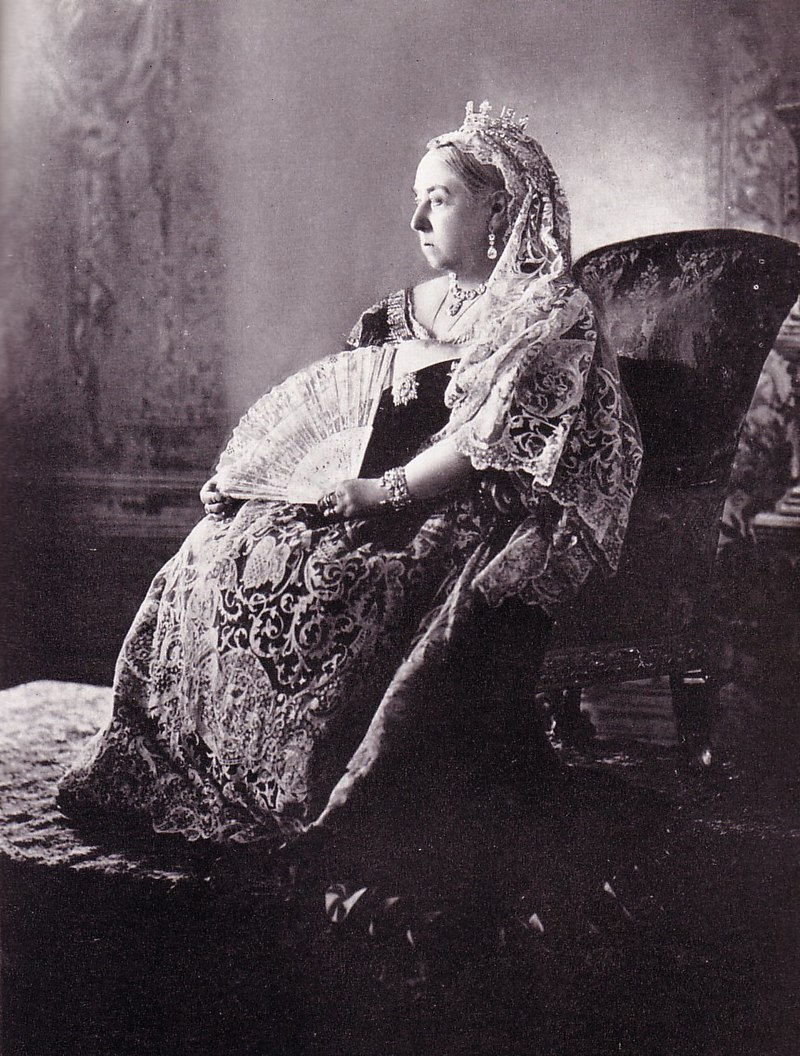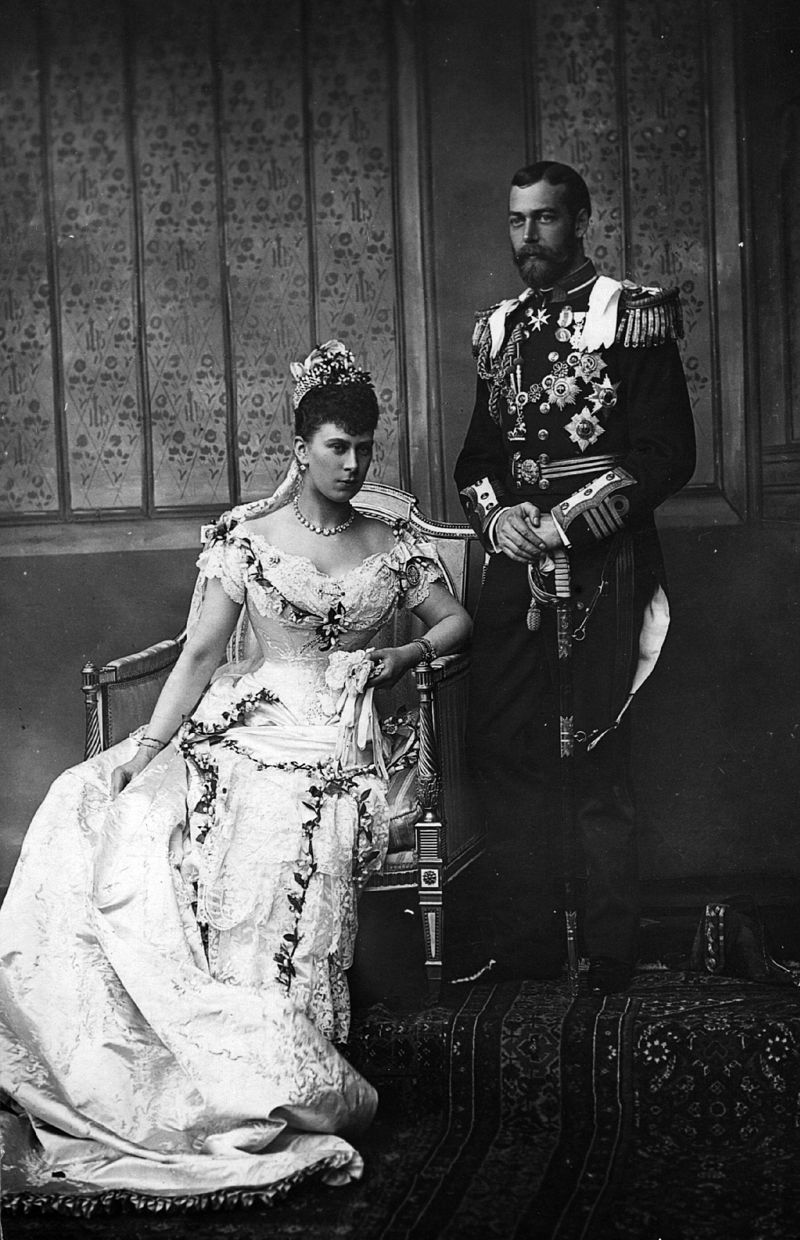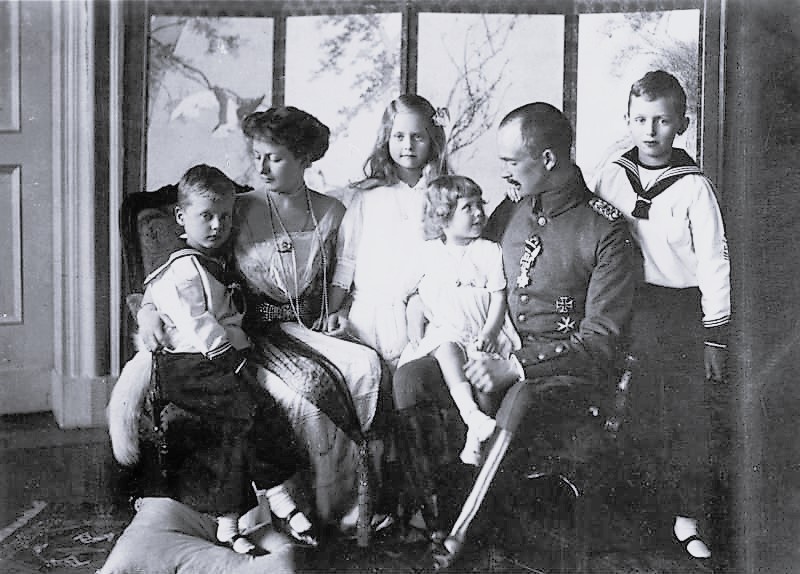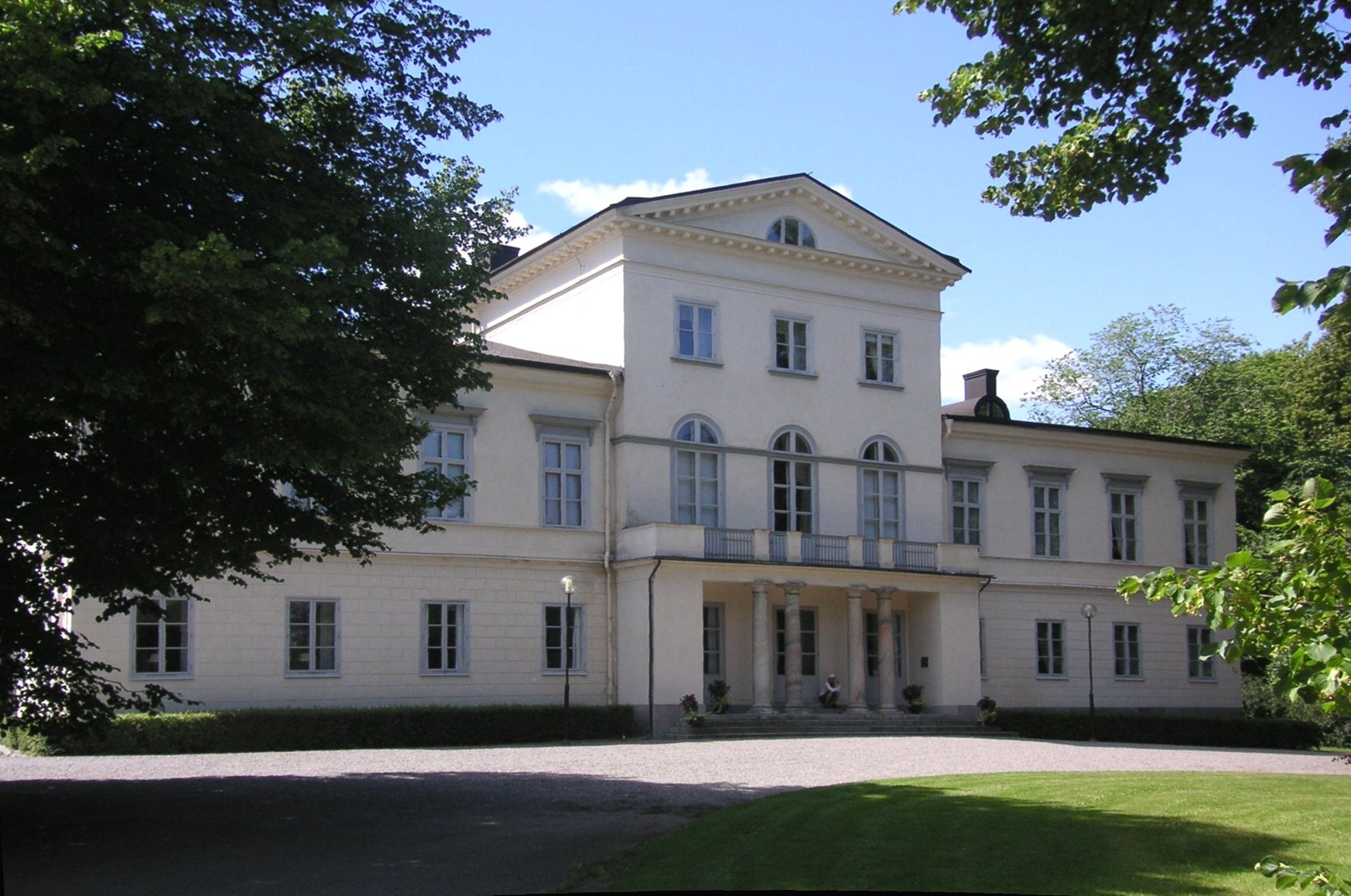by Susan Flantzer © Unofficial Royalty 2017
The Prince of Wales (the future King Charles III) and Lady Diana Spencer were married on July 29, 1981, at St. Paul’s Cathedral in London, England. The Prince and Princess of Wales, separated in December 1992 and divorced in August 1996. Exactly a year later, Diana, Princess of Wales tragically died in a car accident in Paris, France.
The Family of Prince Charles

HRH Prince Charles Philip Arthur George of Edinburgh was born on November 14, 1948, at Buckingham Palace, London. Charles was the first child of HRH Princess Elizabeth and her husband of one year, HRH The Duke of Edinburgh, born HRH Prince Philip of Greece and Denmark. Elizabeth was the elder daughter and the first of two children of King George VI and Lady Elizabeth Bowes-Lyon, who was the youngest daughter and the ninth of ten children of Claude Bowes-Lyon, 14th Earl of Strathmore and Kinghorne. Philip’s father was HRH Prince Andrew of Greece, the son of King George I of Greece (formerly Prince William of Denmark) and Grand Duchess Olga Konstantinovna of Russia. His mother was Her Serene Highness Princess Alice of Battenberg. Alice was the daughter of Prince Louis of Battenberg and Princess Victoria of Hesse and by Rhine. During World War I, when King George V ordered his family to relinquish their German styles and titles, Prince Louis became Louis Mountbatten, 1st Marquess of Milford Haven. Princess Victoria’s mother was Princess Alice, a daughter of Queen Victoria and Prince Albert. Therefore, Charles’ parents are both great-great-grandchildren of Queen Victoria and Prince Albert.
Charles’ parents added another child to the family, Princess Anne, born on August 15, 1950. Ill with lung cancer, King George VI died on February 6, 1952, and the 25-year-old Princess Elizabeth became Queen Elizabeth II. Her duties as Queen postponed additions to the family. Prince Andrew was born eight years later on February 19, 1960, and Prince Edward was born on March 10, 1964.
As soon as his mother became Queen, Charles was the heir apparent to the throne, and as the monarch’s eldest son became Duke of Cornwall. In the Scottish peerage, he became Duke of Rothesay, Earl of Carrick, Baron of Renfrew, Lord of the Isles, and Prince and Great Steward of Scotland. Charles was created Prince of Wales and Earl of Chester on July 26, 1958. He was invested as Prince of Wales on July 1, 1969, at Caernarvon Castle in Wales.
Queen Elizabeth’s children have been unlucky in marriage. Charles and Diana, The Prince and Princess of Wales, separated in December 1992 and divorced in August 1996. Exactly a year later, Diana, Princess of Wales tragically died in a car accident in Paris. In 1974, Princess Anne married Mark Phillips, a Lieutenant in the 1st Queen’s Dragoon Guards, but the couple separated in 1989 and divorced in 1992. Princess Anne married again in 1992 to Timothy Laurence, then a Commander in the Royal Navy. Prince Andrew married Sarah Ferguson in 1986. The couple separated in 1992 and divorced in 1996. Prince Edward has been the most stable of the Queen’s children as far as marriage is concerned. In 1999, he married Sophie Rhys-Jones, then a public relations manager with her own firm and that marriage still continues as does Princess Anne’s marriage to Timothy Laurence. In 2005, Prince Charles married Camilla Parker-Bowles with whom he had a romantic relationship before and during his marriage.
The Family of Lady Diana Spencer

The Honourable Diana Frances Spencer was born on July 1, 1961, at Park House on the Sandringham Estate in Norfolk, England. Her father was John Spencer, Viscount Althorp, son and heir of Albert Spencer, 7th Earl Spencer, and Lady Cynthia Hamilton, daughter of James Hamilton, 3rd Duke of Abercorn and Lady Rosalind Bingham who was a daughter of Charles Bingham, 4th Earl of Lucan. Her mother was The Honourable Frances Burke Roche, daughter of Edmund Roche, 4th Baron Fermoy and Ruth Gill. In 1975, when Diana’s father succeeded his father as 8th Earl Spencer, her courtesy title became Lady Diana Spencer. Diana’s parents had three other children: Sarah born in 1955, Jane born in 1957, and Charles, 9th Earl Spencer, born in 1964. The children’s parents divorced in 1969 and both remarried.
The Spencer family is an old English noble family. Althorp in Northamptonshire, England has been the ancestral home of the Spencer family since the early 16th century. The Spencer family has served the British monarchy for centuries. More recently, Diana’s grandmother, Lady Fermoy, was a close friend and friend and a lady-in-waiting to Queen Elizabeth The Queen Mother. Diana’s father served as equerry to both King George VI and to Queen Elizabeth II. Among the Spencer family ancestors are the famous soldier and statesman John Churchill, 1st Duke of Marlborough, and his wife Sarah Jennings who was a close friend of Queen Anne, and King Charles II through four of his illegitimate children.
The Engagement


“It is with the greatest pleasure that The Queen and The Duke of Edinburgh announce the betrothal of their beloved son, The Prince of Wales, to the Lady Diana Spencer, daughter of the Earl Spencer and the Honourable Mrs. Shand Kydd.”
This official engagement announcement, issued by Buckingham Palace at 11 AM on February 24, 1981, ended years of speculation over who the world’s most eligible bachelor would marry. The couple had first met in 1977 when Prince Charles was dating Diana’s older sister Sarah. Their romance began when Lady Diana went to Balmoral with Prince Charles in July 1980. Prince Charles proposed to Lady Diana just before she left for a trip to Australia to visit her mother. Diana’s father, Earl Spencer, along with his second wife Raine Spencer, mingled with the crowd outside Buckingham Palace on the day of the announcement. Following tradition, the couple posed for their first official appearance on the terrace at the rear of the palace. Diana was wearing an off-the-rack outfit of a sapphire blue scalloped-edged suit with a white silk blouse with a blue swallow motif. Charles wore a gray, single-breasted suit.
Charles had presented Diana with a platinum engagement ring set with a large oval sapphire and fourteen diamonds. The ring, reported to have cost in the region of $55,000, was made by the royal jewelers Garrard & Company in Regent Street, London. Lady Diana herself selected the largest and most expensive ring from a tray of engagement rings. Copies of the engagement ring went on sale in nearly every British gift and jewelry shop within days of the engagement announcement.
Sources:
“Invitation to a Royal Wedding” by Kathryn Spink
“A Souvenir of the Royal Wedding” by Lornie Leete-Hodge
“Royal Wedding Day”, The Daily Mail
“Diana, Princess of Wales” by Penny Junor
The Trousseau

The Going Away Outfit
Soon after the engagement was announced, Diana began visiting dress designers, dress shops, and milliners, to extend her wardrobe and choose her trousseau. However, she found it increasingly difficult to go shopping as she had before the engagement announcement. Diana’s sister Jane had worked at Vogue magazine before she married. Jane still had connections at the magazine and used them to help Diana. As a top fashion magazine, Vogue knew all the designers, knew what was available in stores, and regularly received dozens of outfits and accessories for possible use in the magazine. Diana was able to go to the Vogue offices two or three times a week and try on exclusive designs. She also developed friendships with the Vogue editors, who gave her much fashion advice. Beatrice Miller, editor in chief; Grace Coddington, fashion editor, and a former model; and Anna Harvey, the deputy fashion editor were able to help Diana decide what suited her, what would be appropriate for which occasion, and what accessories would match. The Vogue editors helped her choose her pre-wedding wardrobe and her trousseau.
Sources:
“Invitation to a Royal Wedding” by Kathryn Spink
“A Souvenir of the Royal Wedding” by Lornie Leete-Hodge
“Royal Wedding Day”, The Daily Mail
“Diana, Princess of Wales” by Penny Junor
The Wedding Attire

Prince Charles wore the Navy’s No. 1 ceremonial dress uniform with a blue Garter sash. The seven attendants’ outfits cost more than the bride’s dress, which was made of ivory pure silk taffeta with embroidered lace panels at the front and back of the bodice, lace-flounced sleeves, and a neckline decorated with taffeta bows. The train was twenty-five feet long and made of silk taffeta trimmed with sparkling old lace. Designers David and Elizabeth Emanuel created the wedding dress in strict secrecy. Both the dress and the tulle veil were hand-embroidered with mother-of-pearl sequins and pearls, as were the matching silk slippers. A little blue bow and a tiny gold horseshoe were sewn at the waist for good luck. Diana’s wedding attire cost well over £2,000, but she was never charged for it. The publicity the Emanuels received was worth much more.
The Spencer family tiara held the veil in place. The “something old” was the Carrickmacross lace on the bodice which had belonged to Queen Mary; the “something borrowed” was diamond earrings from Diana’s mother. Diana carried a bouquet of gardenias, golden roses, orchids, stephanotis, lilies of the valley, freesias, myrtle (taken from a bush grown from a sprig originally taken from Queen Victoria’s wedding bouquet), and veronica. After the ceremony, the bouquet was placed on the Tomb of the Unknown Warrior in Westminster Abbey.
The bridesmaids also wore dresses designed by the Emanuels and the page boys were dressed in Royal Navy cadet summer uniforms dating from 1863, the date of the last State Wedding of a Prince of Wales (later Edward VII). The women in the family looked resplendent: Queen Elizabeth in aquamarine silk crepe-de-Chine, the Queen Mother in green silk georgette, Princess Margaret in coral, and Mrs. Shand Kydd, Diana’s mother, in hyacinth blue. Princess Anne wore an outfit of yellow and white, which a French newspaper called an omellette Norvegienne (a Norwegian omelet: a scoop of ice cream placed on hot beaten eggs).
Sources:
“Invitation to a Royal Wedding” by Kathryn Spink
“A Souvenir of the Royal Wedding” by Lornie Leete-Hodge
“Royal Wedding Day”, The Daily Mail
“Diana, Princess of Wales” by Penny Junor
“Princess” by Robert Lacey
The Wedding Attendants

The bridesmaids and pages were sons and daughters of Prince Charles’ relatives and friends. Lady Sarah Armstrong-Jones, age seventeen, Charles’ first cousin and daughter of Princess Margaret and Lord Snowdon, was the maid of honor.
The other bridesmaids were:
- India Hicks, age fourteen, Charles’ goddaughter and daughter of David Hicks and Lady Pamela Hicks, younger daughter of Lord Mountbatten
- Sarah Jane Gaselee, age ten, daughter of Charles’ horse trainer
- Catherine Cameron, age six, Charles’ goddaughter and daughter of Donald Cameron and Lady Cecil Cameron
- Clementine Hambro, age five, one of Diana’s charges at the Young England Kindergarten and the great-granddaughter of Sir Winston Churchill
The pages were:
- Lord Nicholas Windsor, age eleven, Charles’ godson and son of The Duke and Duchess of Kent
- Edward van Cutsem, age eight, son of Charles’ racehorse training friends Hugh and Emilie van Cutsem
Sources:
“Invitation to a Royal Wedding” by Kathryn Spink
“A Souvenir of the Royal Wedding” by Lornie Leete-Hodge
“Royal Wedding Day”, The Daily Mail
“Diana, Princess of Wales” by Penny Junor
The Ceremony

Guests started arriving at St. Paul’s Cathedral as soon as the doors were opened at 9 AM on July 29, 1981, and were greeted with cheers from the assembled crowd. There had been only one other royal wedding held at St. Paul’s: the wedding of Arthur, Prince of Wales, the son of Henry VII and Catherine of Aragon, in 1501.
Charles arrived at the cathedral with his brothers Andrew and Edward, who were his “supporters.” Andrew was the principal supporter and performed the tasks usually assigned to the best man. Charles and his brothers walked down the aisle to Henry Purcell’s “Trumpet Tune.” As he reached the aisle’s end, there was a great roar from the crowd outside, signaling the arrival of Diana in the Glass Coach.
As Diana entered the cathedral, the State Trumpeters of the Household Cavalry sounded a fanfare. Diana made her three-and-a-half-minute walk up the aisle to the dramatic “Trumpet Voluntary” by Jeremiah Clark. In one arm, Diana carried a bouquet of orchids, stephanotis, gardenias, lilies of the valley, freesias, myrtle, and gold Mountbatten roses. With her other arm, she supported her father, Earl Spencer, who had never completely recovered from a stroke suffered in 1978.
The service began with a hymn. Charles chose “Christ Is Made the Sure Foundation.” Diana’s choice of hymn was “I Vow to Thee My Country,” a favorite hymn from her school days. The same hymn was to be sung at her funeral sixteen years later. The Dean of St. Paul’s introduced the service, but Robert Runcie, the Archbishop of Canterbury, performed the actual marriage ceremony. Diana did not promise “to obey” as royal brides of the past had done.
During the ceremony, both the bride and groom made mistakes. Diana got Charles’ names in the wrong order, while Charles vowed to share all her worldly goods. After reciting their vows, Charles placed the wedding ring on Diana’s finger. The ring, made of 22-karat gold, was fashioned from a nugget found more than fifty years earlier at a mine in North Wales. The same nugget had also been used for the wedding rings of the Queen Mother, the Queen, Princess Margaret, and Princess Anne. The little that was left was used to make the ring for Diana.
Near the end of the seventy-five-minute ceremony, the Archbishop of Canterbury announced to the congregation that “Here is the stuff of which fairy tales are made: the Prince and Princess on their wedding day. Those who are married live happily ever after the wedding day if they persevere in the real adventure which is the royal task of creating each other and creating a more loving world.”
After signing the register, the couple returned to the altar as Dame Kiri Te Kanawa sang Handel’s “Let the Bright Seraphim.” Diana gave a deep curtsey to the Queen before walking back down the aisle to the strain of “Pomp and Circumstance March No. 4 in G” and ‘Crown Imperial.” As the newlyweds left the cathedral, the bells of St. Paul’s rang in jubilation. Soon church bells from all over London joined in the celebration. Charles and Diana, smiling and waving, drove in the 1902 State Postillion Landau down Ludgate Hill, along Fleet Street, past the Law Courts, into the Strand, through Trafalgar Square, into The Mall, and back to Buckingham Palace.
Wedding Guests
2,650 wedding invitations were sent out from the office of The Lord Chamberlain. Most of the invitations went to those who served crown and country: senior armed forces officers, diplomats, politicians, civil servants, local government officials, industrial leaders, and over 200 members of the Queen’s staff from Sandringham, Balmoral, and Windsor. Approximately 3,500 guests attended the wedding.
Most of Europe’s reigning monarchs were present, with the exception of King Juan Carlos and Queen Sofia of Spain. They boycotted because, on their honeymoon, Charles and Diana were boarding the royal yacht at Gibraltar, whose possession is disputed by Spain and the United Kingdom. There were over 160 foreign presidents, prime ministers, and their spouses in attendance.
Diana was given 500 invitations and her parents were given 50 invitations. Diana used her invitations to invite old school friends, the staff at Althorp, her current set of friends, the entire staff she had worked with at the Young England Kindergarten, and the helpful editors of the fashion magazines who helped her choose her trousseau.
Below is a partial guest list.
British Royal Family
- The Queen and The Duke of Edinburgh, the groom’s parents
- The Prince Andrew, the groom’s brother
- The Prince Edward, the groom’s brother
- The Princess Anne, Mrs. Phillips and Captain Mark Phillips, the groom’s sister and brother-in-law
- Peter Phillips, the groom’s nephew
- Zara Phillips, the groom’s niece
- Queen Elizabeth The Queen Mother, the groom’s maternal grandmother
- The Princess Margaret, Countess of Snowdon, the groom’s aunt
- Viscount Linley, the groom’s first cousin
- Lady Sarah Armstrong-Jones, the groom’s first cousin
- Princess Alice, Duchess of Gloucester, the groom’s grandaunt
- The Duke and Duchess of Gloucester, the groom’s cousin once removed and his wife
- Earl of Ulster, the groom’s second cousin
- The Duke and Duchess of Kent, the groom’s cousin once removed and his wife
- Earl of St Andrews, the groom’s second cousin
- Lady Helen Windsor, the groom’s second cousin
- Lord Nicholas Windsor, the groom’s second cousin
- Prince and Princess Michael of Kent, the groom’s cousin once removed and his wife
- Princess Alexandra, The Hon. Mrs. Ogilvy and The Hon. Mr. Angus Ogilvy, the groom’s cousin once removed and husband
- James Ogilvy, the groom’s second cousin
- Marina Ogilvy, the groom’s second cousin
Other Relatives of the British Royal Family
- The Earl and Countess of Harewood, the groom’s first cousin once removed and his wife
- The Hon. Gerald Lascelles and Mrs. Lascelles, the groom’s first cousin once removed and his wife
- The Duke of Fife, the groom’s second cousin once removed
- Captain Alexander Ramsay of Mar and The Lady Saltoun, the groom’s second cousin twice removed and his wife
- The Marchioness of Cambridge, widow of the groom’s first cousin twice removed
- Lady Mary and Mr. Peter Whitley, the groom’s second cousin once removed and her husband
- The Duchess and Duke of Beaufort, the groom’s first cousin twice removed and her husband
- Lady May and Sir Henry Abel Smith, the groom’s first cousin twice removed and her husband
Mountbatten Family
- The Countess Mountbatten of Burma and The Lord Brabourne, the groom’s first cousin once removed and her husband
- Lord and Lady Romsey, the groom’s second cousin and his wife
- The Hon. Michael-John Knatchbull, the groom’s second cousin
- Lady Joanna Knatchbull, the groom’s second cousin
- Lady Amanda Knatchbull, the groom’s second cousin
- The Hon. Philip Knatchbull, the groom’s second cousin
- The Hon. Timothy Knatchbull, the groom’s second cousin
- Lady Pamela and Mr. David Hicks, the groom’s first cousin once removed and her husband
- Miss Edwina Hicks, the groom’s second cousin
- Ashley Hicks, the groom’s second cousin
- India Hicks, the groom’s second cousin
Bowes-Lyon Family
- The Earl and Countess of Strathmore and Kinghorne, the groom’s first cousin once removed and his wife
- The Hon. Margaret and Mr. Denys Rhodes, the groom’s first cousin once removed and her husband
Spencer Family
- The Earl and Countess Spencer, the bride’s father and stepmother
- Lady Sarah and Mr. Neil McCorquodale, the bride’s sister and brother-in-law
- Lady Jane and Mr. Robert Fellowes, the bride’s sister and brother-in-law
- Viscount Althorp, the bride’s brother
- Lady Anne and Captain Christopher Wake-Walker, the bride’s paternal aunt and uncle
- Mrs. and Mr. Anthony Duckworth-Chad, the bride’s first cousin and her husband
- Mr. and Mrs. David Wake-Walker, the bride’s first cousin and his wife
- Mr. and Mr.s Richard Wake-Walker, the bride’s first cousin and his wife
- The Major Michael Wake-Walker, the bride’s first cousin
- Mrs. and Major Charles MacFarlane, the bride’s first cousin and her husband
- Captain the Hon. George Spencer, the bride’s paternal great-uncle
- Robert Spencer, the bride’s first cousin, once removed
- Lady Margaret Douglas-Home, the bride’s paternal great-aunt
Roche Family
- The Hon. Frances and Mr. Peter Shand Kydd, the bride’s mother and stepfather
- The Dowager Lady Fermoy, the bride’s maternal grandmother
- The Lord and the Lady Fermoy, the bride’s maternal uncle and aunt
- The Hon. Frances Roche, the bride’s first cousin
- The Hon. Maurice Roche, the bride’s first cousin
- The Hon. Hugh Roche, the bride’s first cousin
- The Hon. Mary and Mr. Michael Gunningham, the bride’s maternal aunt and uncle
- Alexandra Berry, the bride’s first cousin
- Antonia Berry, the bride’s first cousin
- Edward Berry, the bride’s first cousin
Hamilton Family
- The Dowager Duchess of Abercorn, the bride’s paternal great-aunt by marriage
- The Duke and The Duchess of Abercorn, the bride’s paternal first cousin, once removed, and his wife
Foreign Royalty
- The Aga Khan and Princess Salimah Aga Khan
- Prince and Princess Ludwig of Baden (the groom’s first cousin and his wife)
- King Baudouin and Queen Fabiola of the Belgians
- Tsar Simeon II and Tsaritsa Margarita of Bulgaria
- Queen Margrethe II and Prince Henrik of Denmark
- Prince George Valdemar of Denmark
- King Constantine II of the Hellenes (the groom’s second cousin)
- Crown Prince Pavlos of Greece
- Prince Nikolaos of Greece and Denmark
- Princess Alexia of Greece and Denmark
- Prince and Princess George William of Hanover (the groom’s aunt and uncle)
- Prince Georg of Hanover (the groom’s first cousin)
- Prince and Princess Karl of Hesse (the groom’s first cousin and his wife)
- Princess Christina Margarethe of Hesse and Robert van Eyck (the groom’s first cousin and her husband)
- Princess Dorothea and Prince Friedrich Karl of Windisch-Grätz (the groom’s first cousin and her husband)
- Princess Marina of Windisch-Grätz
- Prince and Princess Kraft of Hohenlohe-Langenburg (the groom’s first cousin and his wife)
- Prince and Princess Andreas of Hohenlohe-Langenburg (the groom’s first cousin and his wife)
- Prince and Princess Albrecht of Hohenlohe-Langenburg (the groom’s first cousin and his wife)
- Princess Beatrix of Hohenlohe-Langenburg (the groom’s first cousin)
- Crown Prince Akihito and Crown Princess Michiko of Japan
- Crown Prince Hassan and Crown Princess Sarvath of Jordan
- Queen ‘Mamohato Bereng Seeiso of Lesotho
- Prince Franz Josef II and Princess Gina of Liechtenstein
- Prince Hans-Adam and Princess Marie of Liechtenstein
- Grand Duke Jean and Grand Duchess Joséphine-Charlotte of Luxembourg
- Princess Grace of Monaco
- Albert, Hereditary Prince of Monaco
- Prince Gyanendra and Princess Komal of Nepal
- Queen Beatrix and Prince Claus of the Netherlands
- King Olav V of Norway
- Crown Prince Harald and Crown Princess Sonja of Norway
- King Michael and Queen Anne of Romania
- King Carl XVI Gustaf and Queen Silvia of Sweden
- Princess Margaretha, Mrs. Ambler and Mr. John Ambler
- Princess Maha Chakri Sirindhorn of Thailand
- King Tāufaʻāhau Tupou and Queen Halaevalu Mataʻaho ʻAhomeʻe of Tonga
- Malietoa Tanumafil of Western Samoa
- Prince Gabieni and Princess Lindiow of Swaziland
- Crown Prince Alexander of Yugoslavia
- Prince and Princess Tomislav of Yugoslavia (the groom’s first cousin and her husband)
- Prince Nikola of Yugoslavia
- Princess Katarina of Yugoslavia (the groom’s first cousin once removed)
- Prince Christopher of Yugoslavia
- Princess Maria Tatiana of Yugoslavia
- Princess Olga of Yugoslavia
- Prince and Princess Alexander of Yugoslavia (the groom’s second cousin and his wife)
- Princess Elizabeth of Yugoslavia (the groom’s second cousin)
Representatives of Governments
- Margaret Thatcher, Prime Minister of the United Kingdom
- François Mitterrand, President of the French Republic
- Karl Carstens, President of the Federal Republic of Germany
- Bülend Ulusu, Prime Minister of Turkey, and his wife
- Mrs. Nancy Reagan, First Lady of the United States
- Sir Zelman Cowen, Governor-General of Australia, and Lady Cowen
- Sir Gerald Cash, Governor-General of the Bahamas, and Lady Cash
- Sir Deighton Lisle Ward, Governor-General of Barbados, and Lady Ward
- Edward Schreyer, Governor-General of Canada, and Mrs. Schreyer
- Ratu Sir George Cakobau, Governor-General of Fiji, and Lady Lelea Seruwaia Balekiwai
- Sir Paul Scoon, Governor-General of Grenada, and Lady Scoon
- Sir Florizel Glasspole, Governor-General of Jamaica, and Lady Glasspole
- Sir Dayendranath Burrenchobay, Governor-General of Mauritius, and Lady Burenchobay
- Sir David Beattie, Governor-General of New Zealand, and Lady Beattie
- Sir Tore Lokoloko, Governor-General of Papua New Guinea, and Lady Lokoloko
- Sir Baddeley Devesi, Governor-General of the Solomon Islands, and Lady Devesi
- Sir Sydney Gun-Munro, Governor-General of St. Vincent and the Grenadines
- Spyros Kyprianou, President of Cyprus
- Aurelius Marie, President of Dominica
- Sir Dawda Jawara, President of Gambia
- Forbes Burnham, President of Guyana
- Vigdís Finnbogadóttir, President of Iceland
- Neelam Sanjiva Reddy, President of India
- Ieremia Tabai, President of Kiribati
- Hastings Banda, President of Malawi
- Hammer DeRoburt, President of Nauru
- António Ramalho Eanes, President of Portugal
- France-Albert René, President of Seychelles
- Junius Richard Jayewardene, President of Sri Lanka
- Sir Ellis Clarke, President of Trinidad and Tobago
- Canaan Banana, President of Zimbabwe
- Ati George Sokomanu, President of Vanuatu
- Mrs. Fulera Limann, wife of the President of Ghana
- Mrs. Miria Obote, wife of the President of Uganda
- Mrs. Betty Kaunda, wife of the President of Zambia
- Mwai Kibaki, Vice President of Kenya
- Alex Ifeanyichukwu Ekwueme, Vice President of Nigeria
Sources:
“Invitation to a Royal Wedding” by Kathryn Spink
“A Souvenir of the Royal Wedding” by Lornie Leete-Hodge
“Royal Wedding Day”, The Daily Mail
“Diana, Princess of Wales” by Penny Junor
“The British Royal Family: Great Front Pages” by Anthony Holden
Wikipedia: List of wedding guests of Charles, Prince of Wales and Lady Diana Spencer
The Wedding Luncheon

After the ceremony, the couple returned to Buckingham Palace for their wedding breakfast. Following five balcony appearances and one royal kiss, they attended a three-course luncheon held for 118 of their closest friends and relatives. The luncheon, prepared in the Buckingham Palace kitchens, was served in the Ball Supper Room. The meal consisted of brill coated in lobster sauce, supreme de volaille Princesse de Galles, strawberries and cream, served with 3 different wines. The five-tiered, 225-pound hexagonal wedding cake was cut by Prince Charles, using his ceremonial sword. The cake was made by the Royal Navy Cookery School in Chatham. It took four men two days to sort the fruit and check each currant, raisin, and cherry. Master baker, Chief Petty Officer David Avery, spent eleven weeks creating the cake, etching the couple’s coats of arms, family crests, and pictures of their homes, in color on the white icing.
Sources:
“Invitation to a Royal Wedding” by Kathryn Spink
“A Souvenir of the Royal Wedding” by Lornie Leete-Hodge
“Royal Wedding Day”, The Daily Mail
“Diana, Princess of Wales” by Penny Junor
The Honeymoon

After the wedding breakfast, Charles and Diana left Buckingham Palace in an open carriage decorated with heart-shaped balloons sporting imprints of the Prince of Wales’ feathers, and a “Just Married” sign scrawled in lipstick borrowed from a lady-in-waiting, placed there by supporters Prince Andrew and Prince Edward. Charles had changed into a gray suit and Diana into a melon-colored silk suit designed by Belville Sasson and a matching hat by Knightsbridge milliner John Boyd. She was also wearing the same six-strand pearl choker that her sister Sarah had worn to the wedding. Sarah went home bare-necked.
They departed Waterloo Station for Broadlands, the family home of the Mountbattens, where Queen Elizabeth and Prince Philip spent their wedding night in 1947. Lord and Lady Romsey, the current residents, had moved out to give Charles and Diana the entire run of the estate. There they spent two days in peace, away from crowds, and three nights in a large four-poster bed in the Portico Room.
After Broadlands, Charles and Diana flew from Eastleigh Airport to Gibraltar, where the couple boarded the royal yacht Britannia for a Mediterranean cruise. The cruise included stops in Tunisia, Sicily, Egypt, and the Greek Islands. The course of the Britannia was kept a secret to ensure the couple’s privacy. Twelve days later, Britannia docked at Port Said, Egypt, where Charles and Diana entertained Egyptian President Anwar Sadat and his wife Jihan. After sailing through the Suez Canal and into the northern Red Sea, the couple flew to Scotland to join the rest of the Royal Family at Balmoral.
Sources:
“Invitation to a Royal Wedding” by Kathryn Spink
“A Souvenir of the Royal Wedding” by Lornie Leete-Hodge
“Royal Wedding Day”, The Daily Mail
“Diana, Princess of Wales” by Penny Junor
“Princess” by Robert Lacey
Children
Charles and Diana had two sons:
This article is the intellectual property of Unofficial Royalty and is NOT TO BE COPIED, EDITED, OR POSTED IN ANY FORM ON ANOTHER WEBSITE under any circumstances. It is permissible to use a link that directs to Unofficial Royalty.



